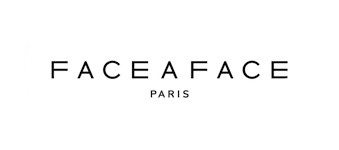If you often experience a scratchy or burning sensation in your eyes or find yourself constantly rubbing or blinking to try and ease the discomfort, you may be suffering from dry eye syndrome.
This common condition affects millions worldwide and can significantly impact daily life. From difficulty reading to trouble driving at night, dry eyes can cause a range of symptoms like blurriness that go beyond just feeling uncomfortable. However, with proper diagnosis and treatment, managing this condition is possible.
Dry eye exams look for corneal staining, tear production, and more to help alleviate any discomfort associated with dry eyes. So grab a cup of tea or coffee (maybe even some eye drops), sit back, and let’s dive into the world of dry eye exams.
Importance of Eye Exams
Your eyesight is one of your most valuable possessions, and taking care of it is important. One of the best ways to do that is by scheduling regular eye exams. These appointments not only help detect any changes in your vision, but they can also include a dry eye exam, which is crucial in identifying and treating a condition that can cause discomfort and even damage to your eyes.
By taking the time to have your eyes examined, you’re investing in your long-term eye health. Plus, with today’s advanced technology and knowledgeable eye care professionals, there’s never been a better time to prioritize your eye health.
What Is Dry Eye Syndrome?
Dry eye syndrome occurs when your eyes don’t produce enough tears or when your tears evaporate too quickly. This can lead to uncomfortable symptoms like redness and a feeling of grittiness in your eyes. But dry eye syndrome doesn’t just affect your comfort; it can also affect your vision.
Over time, dry eyes can cause blurry vision, difficulty focusing, and even damage your cornea. The good news is that many treatments are available to help manage dry eye syndrome. By working with your eye doctor, you can find a solution that works for you and return to living your life with clear, comfortable vision.
Symptoms of Dry Eye Syndrome
If you experience any of the following symptoms, it might be time to book an eye exam:
- Red eyes
- Itching
- Burning
- Stinging
- Blurry vision
- Sensitivity to light
- Watery eyes
- Feeling like there is something in your eye
If left untreated, dry eye syndrome can lead to more severe eye problems, like corneal ulcers or vision loss, so taking action early is essential. With the proper diagnosis and treatment, you can experience relief and enjoy your day-to-day life without the irritation and discomfort characteristic of dry eye syndrome.
Routine Eye Exams Vs. Dry Eye Exams
When caring for your eyes, knowing the difference between a routine eye exam and a dry eye exam is important. While a routine exam checks for refractive errors like nearsightedness or farsightedness, a dry eye exam checks for tear production and dryness issues.
This type of exam is particularly important for those who wear contact lenses or spend a lot of time looking at screens. But don’t worry; a dry eye exam is a simple process that can help prevent long-term eye damage. By understanding the differences between these types of exams, you can better prioritize your eye health.
Preparing for a Dry Eye Exam
If you’re experiencing dry eye symptoms, like itching or redness, it may be time to schedule an appointment with your eye doctor. But what can you expect during a dry eye exam?
Firstly, your doctor will likely ask about your symptoms, medical history, and any medications you’re taking. They may also perform various tests to evaluate the quantity and quality of your tears.
It’s important to be honest about your symptoms and follow the doctor’s instructions to get the most out of your appointment. They may recommend eye drops, lifestyle changes, or other treatments to help alleviate dry eye symptoms. You can look forward to seeing the world more clearly and comfortably with proper diagnosis and treatment.
Tests & Tools Used in a Dry Eye Exam
If you’re experiencing dry eyes, getting a thorough exam to determine the root cause and find an effective treatment plan is vital. During a dry eye exam, your eye doctor may use various tests and tools to assess your tear function and identify any corneal staining or damage. These tests can range from simple tear production measurements to more specialized imaging technologies.
Tests for a dry eye exam can include:
- Tear break-up time: This allows the optometrist to see how quickly your tears evaporate after each blink.
- Tear meniscus height: This measures the tear quantity on your eyes’ surface.
- Corneal sensitivity testing
- Meibiography: This captures images of your meibomian (oil) glands, allowing your optometrist to assess the cause of your dry eye better.
Your eye doctor can explain each step and test to you. With the correct information and tools, managing dry eyes doesn’t have to be a daunting task.

Potential Treatments & Solutions
Luckily, during an eye exam, potential treatments and solutions can be identified to alleviate the discomfort caused by this condition.
These solutions can include:
- Artificial tears
- Warm compresses
- Proper eye hygiene
- Moisturizing gels or ointments
- Supplements
- Prescription eye drops
- Punctal plugs
- Surgery
- Medication
After a thorough examination, your eye doctor may recommend simple changes to your lifestyle, like using a humidifier or taking breaks from digital devices. Alternatively, they may suggest prescription eye drops or ointments to lubricate your eyes. Rest assured that solutions are available, and you can enjoy relief from dry eye syndrome with proper care and attention.
After Your Dry Eye Exam
Following your dry eye exam, your doctor will discuss the appropriate course of treatment for you. They may also recommend follow-up appointments to monitor the effectiveness of your treatment and make any necessary adjustments.At Broadway Eye Care, we are here to help alleviate the symptoms of dry eyes. We offer a comprehensive treatment plan for those with dry eyes. Call us today to book an appointment.









